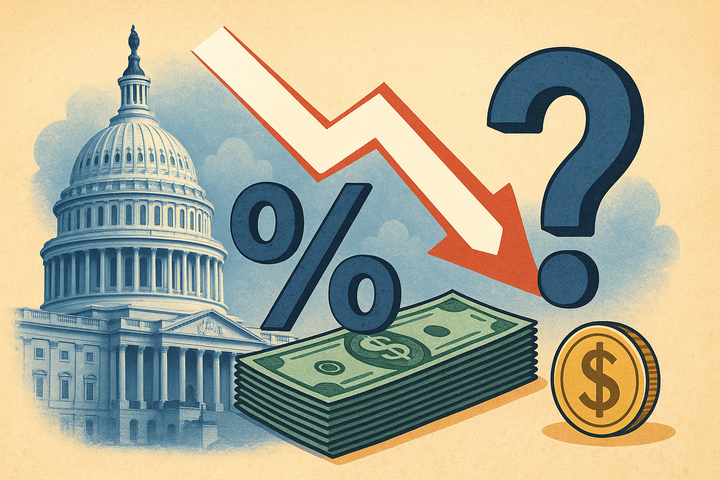
The Fed’s Big Decision
July 15, 2025
In the ever-turbulent world of finance, few events capture the collective breath of markets, investors, and policymakers like an interest rate decision by the U.S. Federal Reserve. Each shift sparks heated debate—will a rate cut propel the economy to new heights or push it toward unintended disaster? At Lorry Capital, we've unpacked this critical economic crossroads to understand the true implications of interest rate cuts.
Rate Cuts: Economic Medicine or Poison?
At their core, interest rate cuts act as economic stimulus, intended to boost spending and investment by making borrowing cheaper. Historically, the Fed deploys cuts during periods of economic slowdown to encourage growth. Think back to 2008 and 2020: in each crisis, swift rate cuts were vital in preventing economic collapse. But cuts aren’t always the right prescription—if the economy is already overheated, lowering rates can fuel inflation and dangerous financial bubbles.
Stability or Instability: What Does a Cut Signal?
Here’s the paradox: rate cuts simultaneously reflect and influence stability. Drastic cuts often signal underlying problems, creating anxiety. However, when done strategically, they stabilize markets by reassuring investors that support is available. The key lies in the Fed’s messaging—how clearly it conveys its intent is often just as important as the decision itself.
Playing It Safe: The Merits of Caution
The current Fed, under Chair Jerome Powell, has adopted a cautious stance. Why? Inflation remains stubborn, and premature cuts could reignite prices, undermining credibility built painstakingly over the past few years. By holding off cuts, the Fed prevents new speculative bubbles, maintains its independence, and preserves economic ammo for real downturns. As the old investment proverb goes, “measure twice, cut once.”
The Risks of Waiting Too Long
Yet caution carries risks. Wait too long, and the Fed might inadvertently trigger the very recession it hopes to avoid. Tight monetary policy can choke growth, raise unemployment unnecessarily, and heighten financial system vulnerabilities. A timely rate cut is akin to releasing pressure slowly, rather than risking a sudden, destabilizing release.
Against the Cut: Why Some Argue ‘Not Yet’
Critics of immediate rate cuts highlight persistently high inflation, a resilient job market, and ongoing risks of inflating new asset bubbles. They argue a premature cut could erode the Fed’s inflation-fighting credibility and introduce unnecessary volatility.
For the Cut: Making the Case for Stimulus
Supporters contend that inflation is sufficiently controlled, warranting cautious easing. Lower borrowing costs can reignite housing, support consumer spending, and sustain employment gains without significantly reigniting inflation. To proponents, holding rates high now risks harming growth unnecessarily.
The Crystal Ball: What Do Experts Expect?
Market forecasts and expert analyses converge on one scenario: cautious rate cuts are coming, likely towards late 2025, with modest reductions anticipated. The consensus? Expect two quarter-point cuts if inflation cools further and employment softens slightly. However, economic uncertainty means all forecasts must remain flexible—data, as always, will drive the Fed’s hand.
The Bottom Line: Walking the Tightrope
Ultimately, the Fed’s decisions will shape economic stability profoundly. Too soon or too aggressively, cuts could unleash inflation. Too late or too cautiously, and recession risks rise. For investors, clarity and vigilance are key—understanding the Fed’s moves ensures smarter, strategic decisions.
At Lorry Capital, we believe informed analysis drives superior investment choices. Interest rate cuts, much like markets themselves, are tools best wielded with caution and clarity. As the economic landscape shifts, our watchful eye remains fixed—ready to guide through every twist and turn of the Fed’s policy journey.